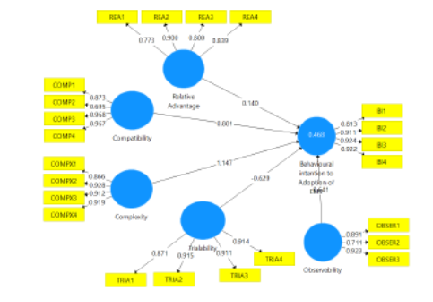


Indian Journal of Science and Technology
Year: 2023, Volume: 16, Issue: 33, Pages: 2622-2630
Original Article
Hannah Ayaba Tanye1*, Isaac Asampana1, Henry Akwetey Matey1, Albert Akanlisikum Akanferi1, Godfred Koi-Akrofi1, Mohammed Nurudeen1
1University of Professional Studies, Accra, Ghana
*Corresponding Author
Email: [email protected]
Received Date:23 March 2023, Accepted Date:16 July 2023, Published Date:01 September 2023
Objective: To research the elements affecting the use of LMS among Distance Learning Students at Public Universities in Ghana. The study contributes to our understanding of the many dimensions of the adoption of LMS, including their acceptability, use, and eventual integration into the user’s daily life and how that influences their behaviour. Methods: This study only uses quantitative methods. This strategy was chosen because it involves an empirical analysis of the social phenomena surrounding LMS use by distance learning students in Ghana. To acquire the data required for the study, it uses quantitative datagathering techniques like surveys. The study involved a survey of the variables affecting Ghanaian public university adoption of LMS in distance education, mentioning the sample size, period of coverage, demography, parameters considered, and how the analysis was made. Findings: Our findings show that the innovation characteristics all have a positive impact on the diffusion of innovations. Relative advantage had a positive impact (t = 2.946, p-value = 0.003). Compatibility also had a positive impact (t = 4.23, p-value = 0.000). Complexity, Trialability, and Observability also had a positive impact on the diffusion of innovations, as (t = 6.144, p-value = 0.000), (t = 3.58, p-value = 0.000), and (t = 3.573, p-value = 0.000), respectively. Novelty: The results showed that elements such as relative advantage, complexity, observability, trialability, and compatibility have a stronger impact on students’ intentions to utilise the LMS. This implies that our findings have the potential to improve students’ university academic achievement, and students may also consider the LMS advantageous if it can accommodate their learning needs. Hence, appropriate policies and strategies should be put in place to ensure that students find the LMS less complex, well-suited to their learning needs, and advantageous.
Keywords: Ghana; eLearning; Distance Learning; Adoption; University; Benefits
© 2023 Tanye et al. This is an open-access article distributed under the terms of the Creative Commons Attribution License, which permits unrestricted use, distribution, and reproduction in any medium, provided the original author and source are credited. Published By Indian Society for Education and Environment (iSee)
Subscribe now for latest articles and news.